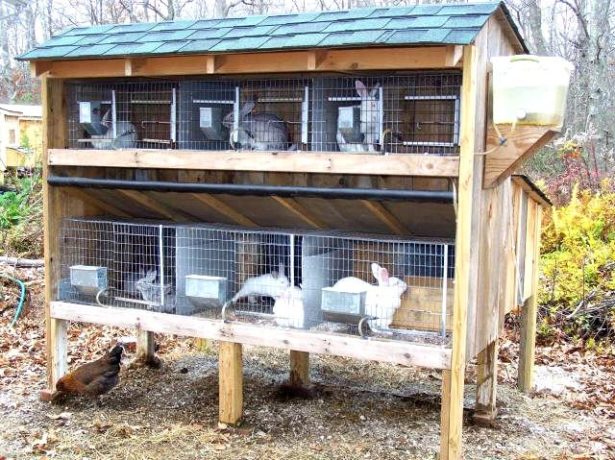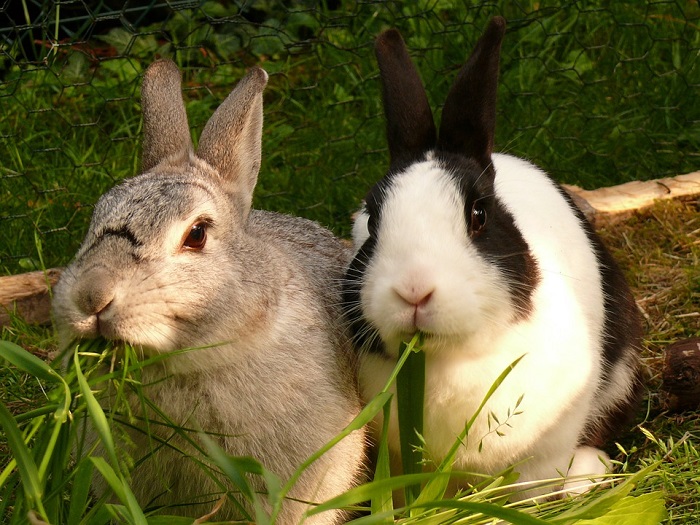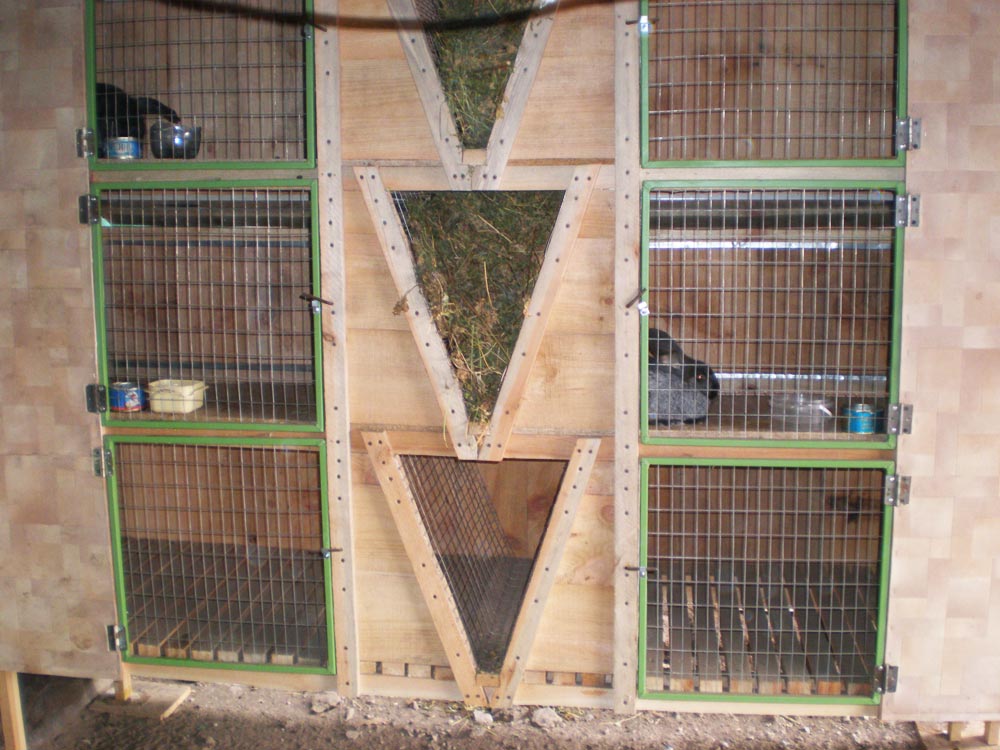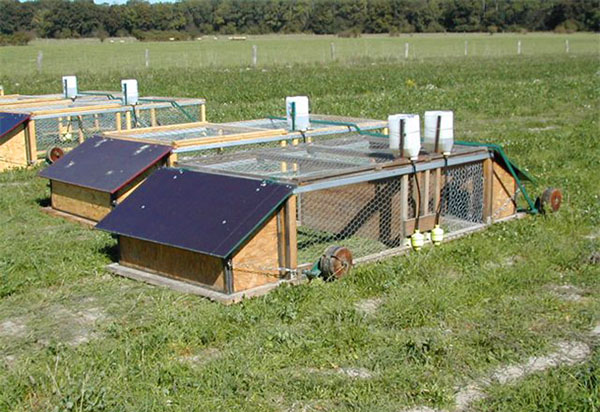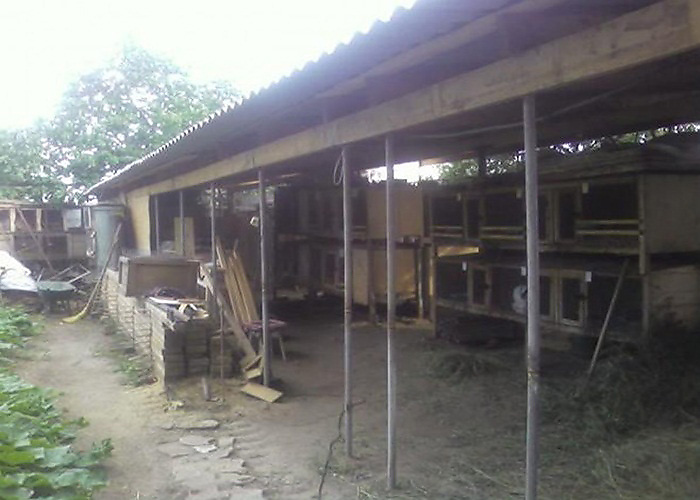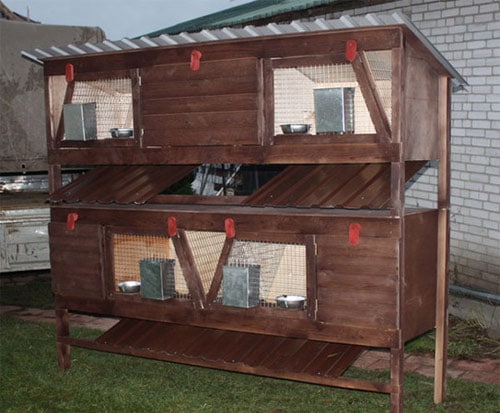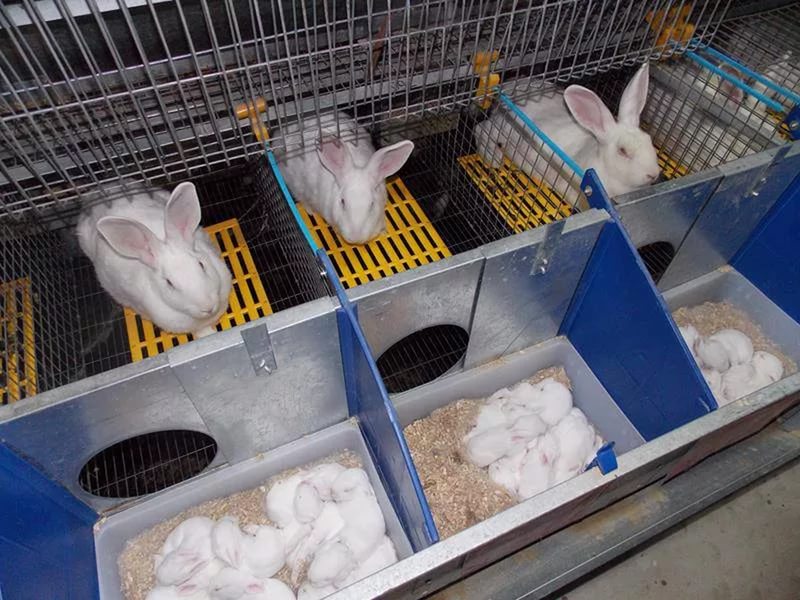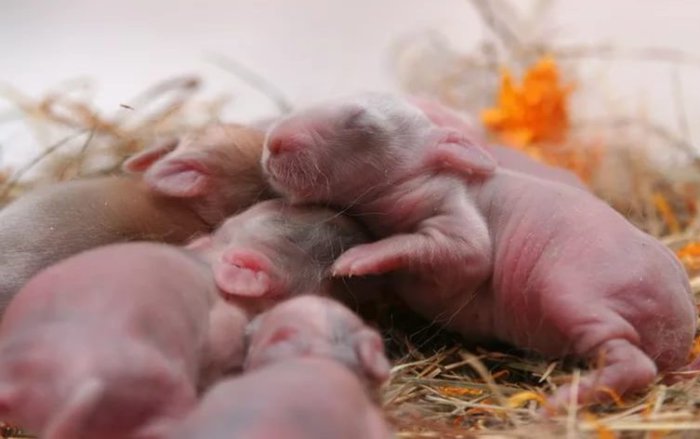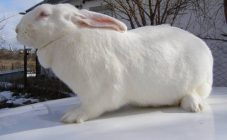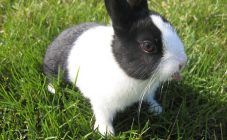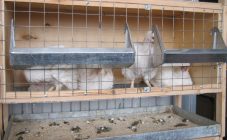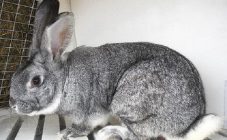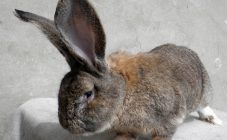Content:
You can not only buy cages for breeding rabbits, but also make them yourself. The main thing is that the "home" for fluffy animals is as comfortable as possible, then the animals will grow quickly and gain weight well. Cages for domestic rabbits are very different, for every taste and budget.
What should be the design
There are a huge variety of cells on sale. The structure can be either single-tier, or consisting of two or more tiers. Here are the basic design requirements for any rabbit home:
- The roof is usually slate;
- The floor rises 80 cm from the ground;
- In multi-tiered cells, the tiers are located clearly one above the other;
- More than three tiers should not be done, as it is unsafe.
Cells, consisting of several tiers, have another name - "sheds". Sheds intended for breeding, keeping young and adult animals have slight differences in design. But the general principle remains unchanged: the space is divided into zones using cells separated from each other by partitions. The number of tiers depends on the number of rabbits. Additional insulation is lined at the bottom. All wooden elements and accessories should be made from the strongest wood species so that animals do not gnaw them.
When choosing industrial cages, you should not purchase European houses, you should give preference to domestic ones, since other breeds of rabbits are bred in Europe, and housing for animals is made according to different standards. It is better to buy the simplest dwellings aimed at Russian livestock breeders, or to independently design cages, for example, according to the Zolotukhin method.
Cell types
It happens that a person has long decided to breed rabbits, but cannot choose a place to keep them. A novice rabbit breeder can easily get confused by the abundance of different types of cells. As a rule, the following varieties are used in Russian farms:
- Cages intended for the encirclement of the female;
- Premises for raising young stock until puberty;
- "Houses" for adults;
- Premises equipped with an aviary, with the possibility of walking;
Each species has its own dedicated supporters. Also, very special cages are made for animals belonging to the Giant and Californian breeds. Depending on who exactly the dwelling is intended for, the cells have different sizes and different internal structures. You can make a cell of any kind yourself using drawings and diagrams from the Internet. Also, good ideas for novice rabbit breeders can be gleaned from the old Soviet magazines "Household Economy".
Author's cell designs are also very popular. Among them should be noted the cages made by the method of Mikhailov and dwellings for animals "according to Zolotukhin". Such cages for rabbits are much more convenient and more compact than purchased ones.
Cells designed by N.I. Zolotukhin
Cages developed by N.I.Zolotukhin are very popular with domestic farmers.Here are their main distinguishing features:
- The animal house consists of three tiers;
- 6 rabbits live in one cage;
- The floor is made of wood or slate, there is no mesh on the floor, there is also no pallet;
- The mother liquor can be removed and carried from place to place.
Animal houses made according to this model are compact, inexpensive, and can be easily made by hand from scrap materials. They are also very easy to clean, which greatly simplifies the care of the animals. Such "houses" will be appropriate both on a small farm and on a backyard with a large livestock. Making cages using the Zolotukhin method at home does not take much time if you have the basic skills of a joiner and carpenter.
Rabbit sheds
Translated from English, the word "shed" means a barn. Shed, in fact, is a construction of two or three tiers of cells, installed under one common canopy. Here are the main features of sheds:
- Base in metal or durable wood;
- Mesh cells;
- Dimensions 60 × 3 m;
- Automatic feeding of food and liquid for animals.
One shed is designed for 500 individuals, but if the rabbit breeder makes a building with his own hands, the sizes may be different, it all depends on the number of livestock. Shed gives good protection from wind and sun; in cages of such a plan, it is easy to maintain the required temperature and humidity. This is a truly versatile dwelling suitable for both young animals and adults.
Rabbit keeping has many advantages: affordability, convenience and ease of caring for animals. Making a shed for rabbits with your own hands is very simple.
Aviaries
You can also keep animals in aviaries. The main advantage of these structures is that the rabbits in the aviary live almost the same as in nature. Here are the main features of the aviaries:
- Animals have a lot of free space;
- No need for automatic feeders;
- Rabbit droppings mixed with grass and earth provide additional insulation;
- You can clean the enclosure no more often than once a quarter.
An aviary is, in fact, not even a cage, but just a place fenced off with a chain-link netting. But, despite the numerous advantages, the aviary also has a serious drawback: in the conditions of the enclosure, animals can quickly become infected from each other with dangerous infections. However, many farmers consider the aviary to be the most convenient home for furry animals. In order to make an aviary, it is not necessary to look for drawings and diagrams on the Internet, it is enough to drive pegs along the perimeter of the site and cover the place of keeping animals with a strong mesh with small cells. Still, rabbit sheds are better than open-air cages, especially in regions with cold climates.
Awnings
Many breeders successfully keep their livestock under a shed. The canopy allows you to keep animals in the fresh air, but the rabbits will be reliably protected from rain, wind and sun. The following requirements are imposed on the canopy:
- It should be located clearly above the cells;
- It is necessary to make a canopy so that the cages can be approached from both sides;
- The best material for a canopy is polycarbonate;
- The roof should be slightly angled to keep rain out.
You should also provide for the possibility of ventilation and protection from drafts in advance, since rabbits easily catch colds, a draft can cause mass death of livestock. The structure of the canopy should be the simplest, but reliable. It is not worth looking for industrial canopies for sale, since their independent production will cost much less.
Bunk cages
If the livestock is small, cages consisting of two tiers are well suited for keeping animals. Below are their main features:
- Width up to 1.5 m;
- Height 1.9 - 2.1 m;
- The structure consists of several separate sections;
- The cage is designed for 4 individuals;
- The sections are divided by a kind of "corridor" in the shape of the letter V.
To make it easy to remove droppings, you can create an additional gap between the two "floors". This gap fits the litter pan. If the house for rabbits will be in a garage or shed, it is enough to cover it with a netting. If the cage is on the street, it should have solid walls. Outside, the tree can be treated with a moisture and mold resistant compound. Two-tier constructions are suitable for keeping rabbits of all breeds, including giants. The main thing is to regularly clean the room, otherwise the animals will often get sick and may die.
Cages for rabbits with queen cells
During the mating season, females require increased attention. During this time, the rabbits can show aggression, so they must be kept separately. For this, special cells with a mother liquor are used. The design of such a house is by no means original and is a kind of "nest" for the mother and newborn children. The bunny should feel as comfortable as possible. They differ in the following features:
- The premise is equipped with a separate place for giving birth and feeding the cubs;
- Sawdust is suitable as a heater. The main thing is that they are out of the access zone of animals;
- If the cage is spacious enough, the queen cell is placed inside;
- If the cage is cramped, a cobbled base is attached to the front wall, which is then covered with a mesh.
In cold weather regions, additional heating can be installed under the floor. The main thing is compliance with fire safety rules. If the female is kept outdoors, the cage must have a canopy. Inside, the complete absence of metal parts and accessories is desirable.
If a farmer needs a cage for a rabbit with a queen cell, the size of the dwelling depends on the “size” of a particular female. The main thing is that the rabbit should be spacious, not cramped.
Materials for making cages
To make a house for rabbits with your own hands, you can use almost any material. Which material to choose depends on the financial capabilities of the farmer. Plastic will cost the least, metal and wood will be more expensive. At the moment, domestic farmers prefer the following options:
- Wood combined with a chain-link mesh;
- Polycarbonate, which is also used for greenhouses and greenhouses;
- Metal;
- Plastic.
If a metal mesh is used in the structure, it must be fixed with wooden or plastic slats.
For the floor, wood or mesh is usually used. Wood retains heat well and mesh floors are easy to clean. Metal is not used in the manufacture of the floor, otherwise the animals will be cold. If the animals are kept outdoors, the wooden walls can be galvanized for warmth and moisture protection.
How to choose a mesh
Rabbit netting is one of the main expenses of a novice farmer. Choosing a mesh for making a "house" is not easy. Here are the basic requirements that must be met:
- The strength of the material from which the mesh is made;
- Small cell size;
- The mesh must be securely attached;
- It is advisable that no metal fittings are used for fastening.
The mesh is used not only for wall decoration and enclosures, but also for flooring. Thanks to the mesh floor, droppings will easily fall through the cells, making cleaning much easier.
It is better to buy a cage net in specialized stores for livestock breeders and farmers.
Features of the location of cells
Rabbits are quite vulnerable animals, so their health and development largely depends on where the cage is. Here are the basic requirements for the place where animals are kept:
- Direct sunlight should not penetrate into the room;
- You should not place cages in basements, as there is often high humidity there, the animals get sick from this;
- A fenced-in aviary should be located in a place where poisonous plants do not grow;
- There should be a blank wall from the north and west, this is necessary to protect from cold winds.
If all the above requirements are taken into account, animals will grow well and gain weight quickly. Also, it is impossible to place cages and aviaries in the immediate vicinity of the place where dogs are kept, since rabbits are shy animals, and dogs have a pronounced hunting instinct. If the dog suddenly breaks off the chain, he will certainly want to feast on rabbit meat, so do not deliberately provoke the dog by placing animals at its side.
For those who are just starting to breed fluffy rodents, it is best to use industrial cages. More experienced farmers may well design the simplest houses on their own, using available materials and drawings.
